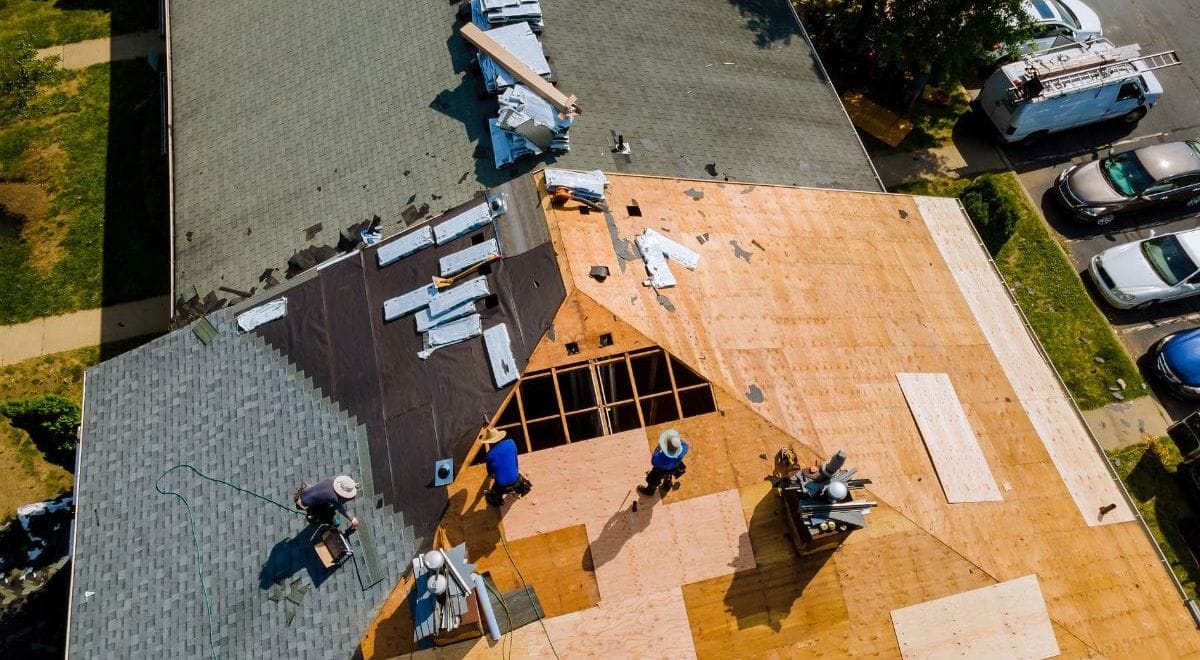When Do You Need to Install a New Roof
Choose a skilled roofing contractor for roof replacement to prevent leaks and water damage, ensuring a secure and durable structure.

Replacing a roof is a major decision that takes time and careful consideration with guidance from a professional, qualified roofing contractor. That is particularly true if the structure leaks and creates interior water damage for the property.
The surface and its surroundings will need to be inspected thoroughly and the new installation must be impeccable under weather conditions that cooperate with the process. This means choosing a reputable Delaware roofer familiar with the fact that the state goes through the traditional four seasons and all that implies.
As seasons change, variables impact replacements like humidity, heat, rain, snow, and more. This can lead to the possibility of delays or decide whether a roofer can make room in their schedule.
As a rule, the recommendation is to do a replacement in the fall. We will explain the reasons why or why not to consider replacements in each season as we move forward.
Tips On Which Season to Install a New Roof
Some states in the country like Delaware go through the typical four seasons with extreme heat followed by thunder and lightning storms in the summer and frigid temperatures with snow and ice storms in the winter.

As the months pass and seasons come and go, the changes in humidity, inclement weather, and temperatures impact when a new roof can be installed on a property. A professional, qualified contractor will decide their schedule based on ideal conditions.
Before committing, a thorough inspection of the surface and surrounding components will decide if there is deterioration or damage that warrants a replacement. With a reliable roofer's guidance, you can make an informed decision if a new roof is right for your situation and when to start the process.
Learn questions to pose to a qualified roofer when consulting for a new roof at https://www.statefarm.com/simple-insights/residence/questions-to-consider-when-replacing-a-roof.
Fall boasts of being the ideal season to start a roof replacement with the temperatures turning cooler. Here are reasons to consider fall and what factors to look at with the other seasons.
The fall including September through November
With the sweltering temperatures from the summer beginning to cool to a more comfortable degree and the humidity decreasing, roofers find the fall more conducive to roof replacement, labeling it the best time for doing so.
It is not only perfect weather for the materials but comfortable working conditions for the team. That can mean a swift installation.
Inclement weather can be more prevalent in the fall compared to summer with stormy seasons passing through. Still, delays will be less of an issue in the earlier part of the fall. Shingles will have plenty of time to adequately seal when temperatures are ideal, there's lower precipitation, and reduced humidity.
In the fall, contractors are still dealing with summer projects due to that being the busiest time for home projects. These spill over into the fall season meaning homeowners might be unable to schedule a new roof installation within a week or two.
Still, with better weather conditions, contractors have the opportunity to work more extended hours, keeping projects on time with the possibility of completion sooner than expected.
Your objective should be to plan a few weeks when getting estimates and to book a credentialed contractor early for this prime time of the year. The spring
The spring includes March through May
The weather will gradually start to warm up in March following a frigid winter that might have given notice of a problem with the roof leaking. That will make the replacement a priority in the warmer months, which is also a prime season for installing a new roof. Spring falls second to the fall as the ideal time to do so.
Part of that is due to roofers' schedules being free from a slower project schedule in the winter and a lack of humidity this time of the year. That can mean a faster consultation and sooner installation allowing you to be prepared for summer storms without fear of leaks.
In the spring, there's minimal chance for heavy snowfall with the milder temperatures plus humidity is lower in the spring compared to summer preventing excessive moisture from causing problems with the installation.
There is the possibility of "spring showers" to create delays. Still, these are often only a couple of days and will not impact the overall deadline tremendously.
The summer including June through August
The conditions are typically hot in a four-season state like Delaware. This is among the most favored seasons for home repairs and improvements including roof replacements due to the most likelihood of clear weather.
Contractors consider this time of year a reasonable choice for a new roof due to the consistency of the warm temperatures and the rainfall later in the afternoon or evening, if at all.
The recommendation is to schedule early in the season to avoid the highest humidity and less sweltering heat, making the working conditions more bearable. With this installation, you can also avoid the possibility of severe storms leading to possible leaks. You will also save costs on energy.
The winter includes December through February

Roofers do not wholly avoid installing new roofs in the winter due to the cold and inclement conditions.
Albeit contractors do face more difficulties. Homeowners, however, will have no problem scheduling a swift consultation. This is hands down the slowest time of year for a professional roofing company. Go here for details on mistakes people make when getting a new roof.
If you have problems that render the project urgent, you can expect a fast turnaround but speak with the contractor about the best materials to use under these conditions.
It is recommended to install asphalt shingles when the temperatures are warmer. They become inflexible when cold making it challenging to make an exact cut or drive a nail.
In addition, heat and sunlight activate the shingle's tar sealant. With the cold gray days of winter, these may not properly adhere. Instead, roofers are often forced to opt for hand-sealing methods to avoid wind blowing the shingles from the surface. This, though, can involve more extensive labor costs.
Final Thought
Fortunately, as a Delaware homeowner, you have all four seasons to choose between when contemplating a new roof. It is a decision that takes careful consideration and the guidance of a credentialed, professional roofer.
The qualified expert will thoroughly inspect the surface and all surrounding components to ensure that replacing the structure is warranted and then recommend the most suitable time to put your home on their schedule.




Comments ()